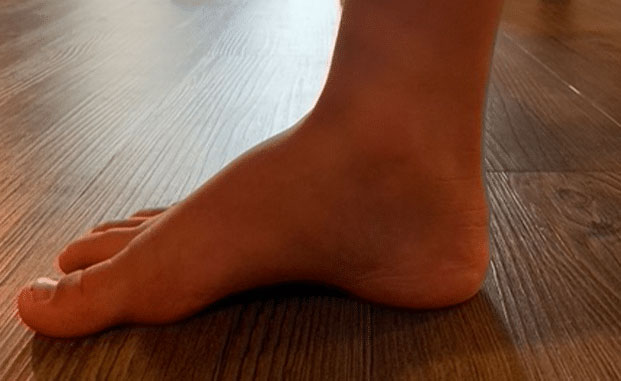How to Determine if Your Child Has High Arches – Follow My 2-Step Method to Figure it Out!
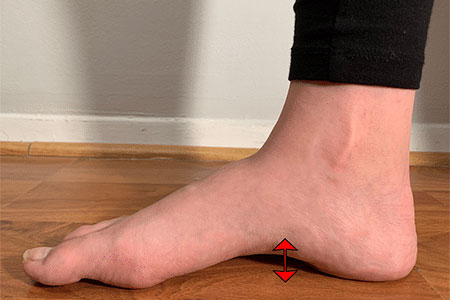
Have you recently noticed your child walking or running differently? Do you think that your child has a high arch? If you believe that your child has a high arch you need to take action immediately, as high arches can often lead to your child placing an excessive amount of weight on the ball and heel of the foot when walking or standing. This can lead to a variety of signs and symptoms, such as pain and instability. Let me show you how to determine if your child has high arches or not.
The shoe store that I work for specializes in helping children with “complicated” foot shapes as well as foot conditions such as flat feet, rolled ankles, low muscle tone, etc. Most children I have seen with high arches were early adolescents, but keep in mind that high arches can develop at any age.
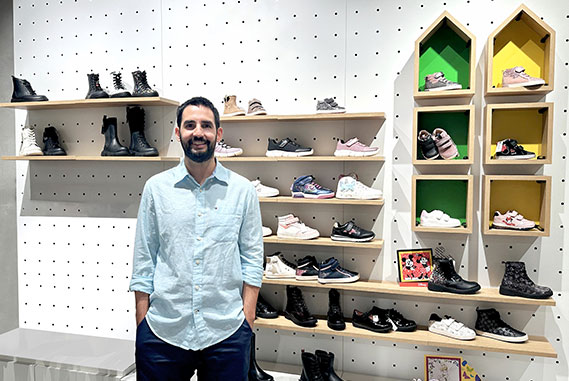
I now dedicate myself to helping families from all over the world determine their children’s exact foot size and find shoes accordingly, and I believe I can help you too.
Keep in mind that I always encourage families to visit their local children’s shoe store. It’s important that you support your local businesses and these stores work really hard to make sure that children wear the correct type of shoes in the correct size. However, if you don’t have a local shoe store that you trust, keep on reading as I will help you determine whether your child has a high arch or not.
Examples of Children with High Arches – Do These Images Look Familiar?

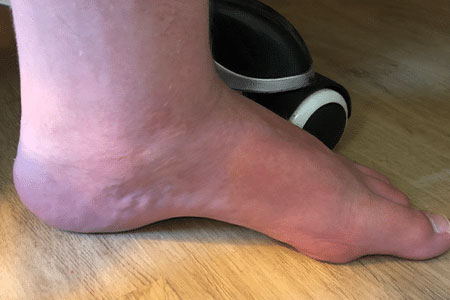

This is how the feet of a child with high arches look from behind. As you can see the child is placing an excessive amount of weight on the outer side of the feet (take a closer look at the right foot).
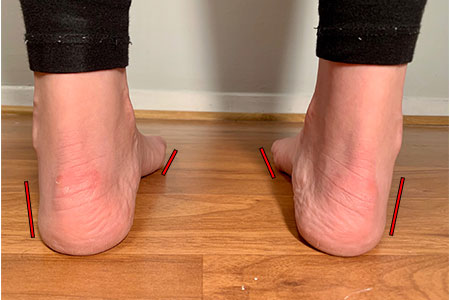
How to Determine If Your Child Has High Arches – Forget About the “Wet Test”
There are several “wet tests” you can do from home that will help you determine your child’s arch shape. You can certainly try this method at home, but I believe that the foot test tells us very little and is in no way predictive of a child’s dynamic mechanics, nor injury risk.
I always doubted the reliability of the “wet test” as it doesn’t help determine what other foot conditions your child might be dealing with as well as what type of shoes your child should wear.
The “wet test” is supposed to retrieve your child’s plantar foot shape. However, it lacks to tell you other key components of your child’s feet (e.g. heel inversion or eversion, forefoot abduction) as the wet footprint test only measures one of them. Your child might have a “normal” arch profile on the wet footprint test, but still have, for example, an everted calcaneus and an abducted forefoot.
I suggest that you follow my 2 step method to figure out whether your child has high arches or not.
Let’s Figure Out If Your Child Has High Arches — Follow 2 Simple Steps!
1️⃣ Step 1
Take three images of your child’s feet. Make sure that your child is standing straight when taking the images and also make sure that your child’s legs are not tilting forward or backward. Below you can see how the images should look like:
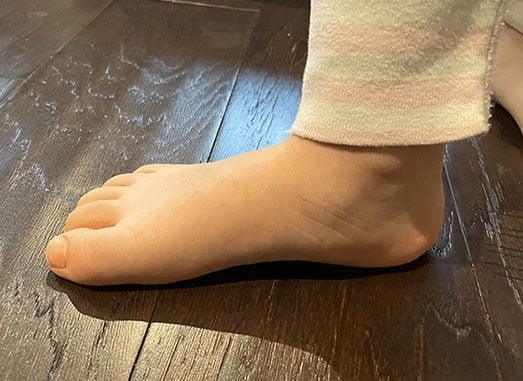
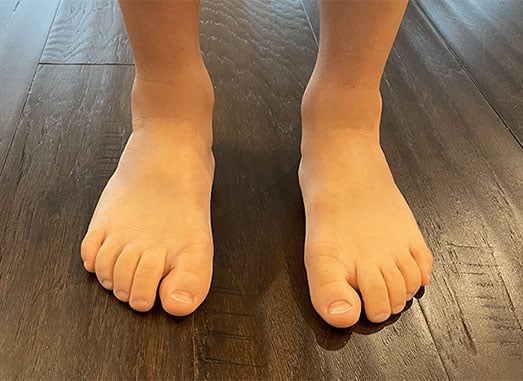
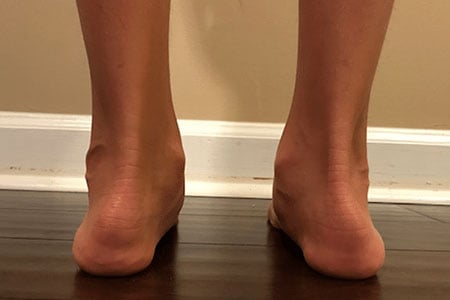
2️⃣ Step 2
Email me these three images of your child’s feet and I will get back to you in less than 24 hours:
The Complications of Leaving Your Child’s High Arches Untreated
As I mentioned before, having high arches can lead children to place an excessive amount of weight on the ball and heel of the foot when walking or standing.
- High arched feet can lead to children developing corns and calluses on the ball, side of the feet, or heels. Children who place extra stress on the heels tend to roll and sprain their ankles. Keep an eye on your child’s toes since children with high arches also tend to develop hammertoes or claw toes.
- High arches can also lead to knee pain and plantar fasciitis.
- High arches make children more prone to injuries such as ankle sprains.
How to Treat Children with High Arches — Shoes and Orthotics
There are certain shoes for children with high arches that can help relieve pain and improve stability by helping redistribute the child’s weight over the whole foot. The goal is to prevent the child from placing an excessive amount of weight on the ball and heel of the foot.
I have found shoes to be the most effective and cost-efficient alternative to improving the foot posture and walking gait of a child with high arches. Depending on the degree of your child’s high arches and whether your child is experiencing foot and leg pain, we might also have to fit an orthotic inside the shoes. However, it all starts with making sure that your child is wearing the correct type of shoes.
Shoes for Kids with High Arches! — What a Difference These Shoes Can Make!
Remember the image I showed you at the beginning of the article with the child with the rolled ankles? Let me show you what a difference the correct pair of shoes can make. It is clear that the child in the image below is placing excessive weight on the outer part of the feet, and this is more noticeable on the child’s right foot:

Now let’s take a look at a different image of the same child standing in a pair of the supportive shoes I recommend. Do you notice how the child’s feet are a lot straighter?

These shoes I recommend provide two key features that make them ideal for children with high arches:
- Substantial outsoles
- Firm heel counters
Determining your child’s arch height is important when it comes to choosing the right footwear and insoles.
What Are The Best Shoes for Kids with High Arches?
I created a different resource that describes the best shoes for kids with high arches.
Please try to be proactive and don’t take the “wait and see approach” when it comes to treating your child’s foot conditions. Waiting for your child’s walking gait or foot posture to resolve on its own can only lead to the condition getting worse.
Trust me when I tell you that I have seen 12 years old with bunions from wearing the wrong type of shoes, something that my coworkers who have 30-plus years of shoe fitting experience never saw before.
You don’t need to buy the most expensive shoes to keep your children’s feet healthy. However, it is important to note that usually the cheaper the shoe is, the less quality, thought, and care shoe companies put into that shoe.


